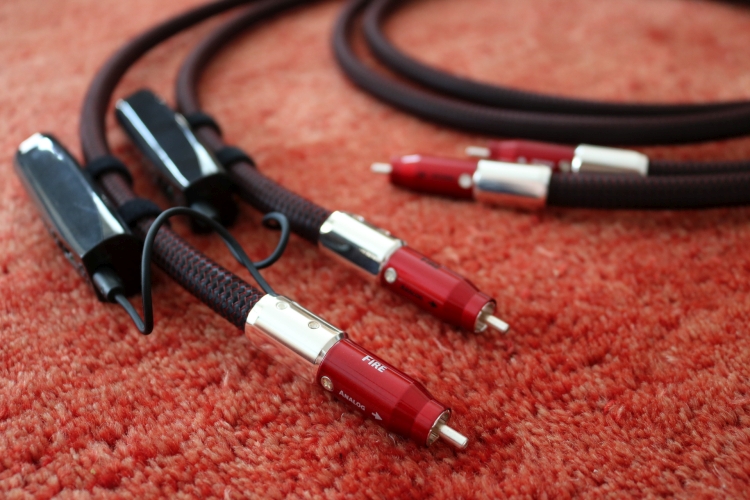
Review samples provided by Audioquest Nederland
Retail prices including 21% VAT:
2.499 Euro for a 0.5-m pair
3.499 Euro for a 1-meter pair
5.499 Euro for a 2-meter pair (as reviewed)
Other lengths available
Regular readers will know that I am a frequent user of AudioQuest Water interlinks. I own several pairs that I use in various locations in both of my systems. The Water is a uniquely robust and characterful-sounding cable and while not the most transparent or highest-resolving cable that I know, it always presents the music with lots of flair and engagement, and in many circumstances, it works highly synergistically. For instance, it works wonders with my Ayon/Xavian system, as well as in the Jadis and Zesto tube systems of my friends MP and JW. And at 699 for a 1-meter and 899 euro for a 2-meter length, it offers great value for money.
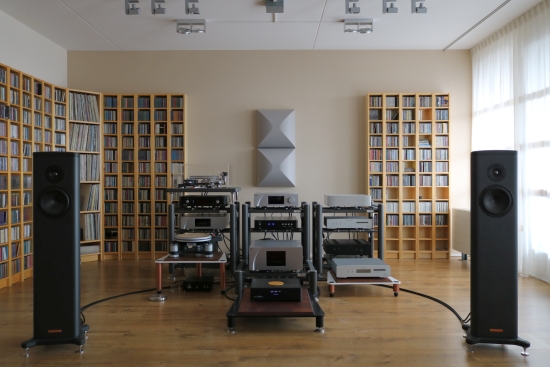
In my main system, I use the Water between the CH P1 phono preamp and Ayon Stealth preamp and I frequently use it for review work. For the most critical connection in this system, the one between the CH C1 DAC and the CH A1.5 power amp, I have so far always used the CH Balanced Link that I purchased along with the components. The CH cable costs 2050 euro per meter or 2490 euro as I use it in a 2-meter length and although this is by no means cheap, it’s also not extravagantly priced. The Balanced Link is actually CH’s most affordable cable and in the context of the system, I’d say there is still quite some wiggle room. The AudioQuest Fire comes in at 2.499 euro for a 0.5m pair, 3.499 for a 1-meter pair, and 5.499 euro for the 2-meter pair that I am using now. Not pocket change by a long shot but also not outrageous given the partnering components.
During the time that I have owned the CH products, I have tried countless other cables in this critical position, including the relatively affordable Water and some very costly cables. But never did I find a better match and thus, the CH cable remained in place.
That is until my friend Niels brought the Fire along for comparison after having purchased it himself upon recommendation from our mutual friend Werner. Well, that comparison did not take long to leave a mark. Ouch! This was not just better, it was considerably better! This prompted me to immediately arrange a review sample.
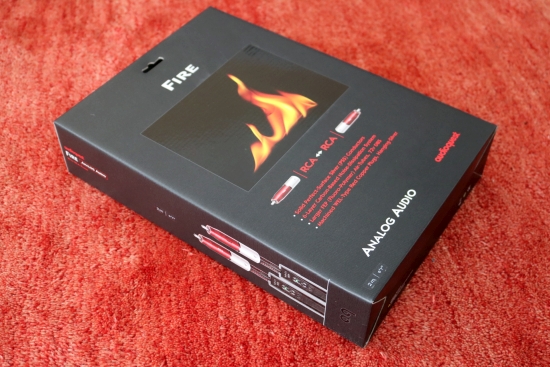
The Elements
Positioned above the Water in the Elements Series is the Earth, then the Wind, and then the Fire. Going from Water to Earth, the main difference is the substitution of PE air tubes for FEP air tubes which form the dielectric material into which the conductors are loosely held. Although this change may sound trivial, it makes a large difference for the sound, which is notably more linear and transparent. Going from Earth to Wind, the main difference is in the substitution of the copper conductor material for pure silver. I have not heard this cable but I presume that the effect will be substantial. Then, stepping up to the Fire, you get an 8-layer Carbon-based noise-dissipation and shielding system instead of the other cables’ 6-layers and super-sturdy and magnificent-looking WEL-type double contact cold-welded connectors that are machined from solid extreme purity Red Copper and plated with pure hanging Silver. Glancing at these differences from one cable to another, one might be excused for underestimating the cumulative effect, but trust me, the difference between the Water and the Fire is HUGE! I’d even go as far as to say that, sonically, the Fire has almost nothing in common with the Water. It’s simply in an entirely different league.
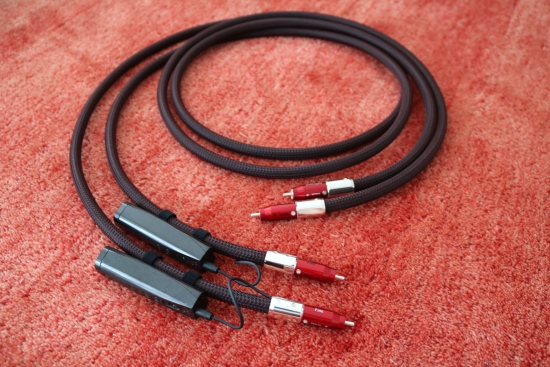
Fire
With the Fire interlink between DAC and power amp, the sound is positively transformed by becoming considerably more robust and incisive as well as more direct and more lively. The cable’s unbridled enthusiasm works wonders throughout the frequency range but the midrange benefits in particular by becoming much more realistic. The effect is akin to the proverbial veil being lifted. I know, an over-used term and, really, how many veils can one lift? But the effect really is striking and this is the best I can describe it.
Throughout all my comparisons in this system thus far, the CH cable had always emerged as the most accurate, most linear, and most neutral but now that I am comparing it with the Fire, it’s as if the CH cable is every so slightly foggy and filtered in its presentation. It’s superbly refined and certainly not in any way colored, but compared to the Fire, it is just a little bit too sweet and friendly. Indeed, you could also call it slightly veiled. But evidently, the other cables that I compared it with so far were even less clear and crisp. And even though I have never thought it to be synthetic in its nature, the pure, open, and communicative Fire does make the CH cable sound less realistic.
Along with purer and more direct midrange, the bass also benefits by becoming more articulate. Even though the CH cable already had highly precise bass, with the Fire, it’s definitely more as if chiseled from granite. By that, I mean that low notes have lost any softness and have become sharply cut and more incisive. The impact and robustness of the bass are also increased, but uniquely, without adding any thickness. Rather, I’d say that the Fire’s portrayal of bass lines is actually tighter and nimbler, and more lifelike than that of the CH cable.
This trend of highly articulate, clear-cut sound continues in the treble, where hi-hats are less rounded, less white-ish, but more direct and impactful and still wide open and airy. Although the CH cable is highly refined and highly resolving, the Fire further raises the speed and accuracy in the transient behavior which makes percussive sounds actually more resemble the real thing.
Re-reading what I just wrote I can understand that one could by now fear that the Fire might introduce a hard and unforgiving sound but that’s not the case. My system may be slightly forgiving in the sense that it is extremely fluid and does not inherently produce any hard edges but it’s also highly revealing and if there was any hardness, I’d hear it. Granted, hard “S”‘es and vigorously hit cymbals and hi-hats are indeed more “concrete” and harder hitting than with the CH cable. But I strongly feel that the CH cable is rounding off the edges, rather than the Fire adding any hardness. That said, the Fire’s neutrality and evenhandedness will reveal issues elsewhere in the system.
Upon first listening, I did feel that the treble was slightly dry in comparison to what I was hearing with the CH cable. That’s what you get with extremely accurate transient behavior and when playing recordings that are themselves a little dry, and not using an analog preamp. I did not mind it but just took note. But with every hour that the cables played, this effect seemed to ameliorate. Already after a couple of days, I was no longer aware of any dryness. Moreover, while the initial switching back to the CH cable still made a case for itself in some aspects, treble fluidity being one of them, increasingly, I found ever less to favor. Rather, the more I listened to the Fire, the more the other cable diminished the joy and involvement that I had with the music.
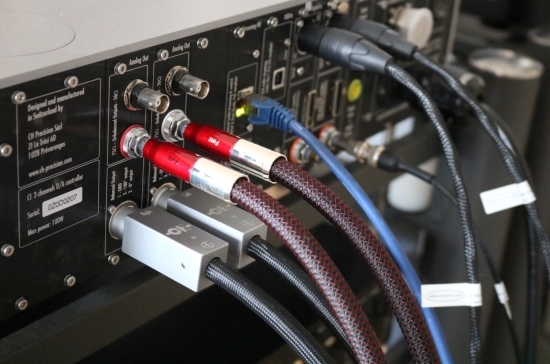
With the CH DAC and amplifier, I can simultaneously connect two interlinks and quickly switch between them via a tablet. Since all connections are independently buffered, they do not interact. This, I have tested time and again and there really is no effect to be noted. Thus, this enables the ideal circumstances for A-B tests and this is how I compared the cables. Additionally, this enables blind tests for a secondary person and that’s just what I did with two of my audio buddies. First up was JW, long known for being Mr. Smooth and an opponent of any hardness in the sound. This is why he was always such a fan of Jeff Rowland amplification with his Apogee Centaur and Duetta Signature speakers. But with the recent years, having switched to Audio Research, Line Magnetic, and currently Zesto tube amplification, and my own continued quest for bass precision, JW has at long last developed a love for bass tightness, along with a preference for purity and lifelike-ness in the midrange over all-out smoothness. Still, knowing how his system sounds, I was unsure which cable JW would prefer. Only one way to find out, right?! Well, that test took no time at all. Already after the first switch from the Fire to the CH cable, JW experienced a lack of conviction and of a lessened articulation and rhythmic conviction, along with a lowered amount of what he calls the “singing quality”, which can be translated to “engaging tunefulness”. Quite simply, JW was experiencing the same as I did, without knowing what cable he was listening to. We did more tests only to confirm what we already heard. Just for completeness’ sake, I repeated this test with my friend MP, a fellow tube-fanatic like JW. To cut to the chase, MP felt exactly the same way. Enough said, right?
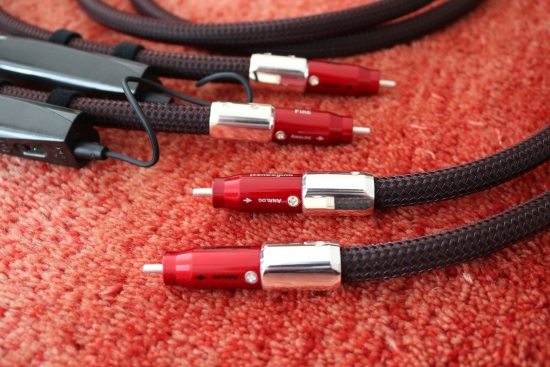
Ok, let’s throw in a last comparison with a new and interesting cable that I found to set the benchmark in its price class and quite a bit beyond: the Driade Flow Link 808 Reference. Even though the difference in cost between these two cables is substantial, they share a handful of properties. Both are very linear, neutral, and transparent, and both have superb low-level resolution. Where the two diverge is in terms of bass impact and incisiveness, overall dynamic impact, and all-around stature of the sound. Whereas the Driade cable is on the gentle side, quite forgiving and always fluid, the Fire is purer, more solid, and more direct and it feels more directly coupled to the music indeed. It takes me closer to the performance and it grips me more. Does that make it worth over 5 times the cost? For me, absolutely! Described like this, the differences may seem relatively small but they are in fact similar in proportion as well as in nature to the differences when switching between the CH cable and the Fire and to me, that’s not subtle at all.
At this stage, I will happily admit that I can no longer part with the Fire. This cable possesses a previously unachievable combination of superb transparency, low-level detail, purity, refinement, and linearity, with fabulous dynamics, rock-solid and highly agile bass, and superb rhythmic qualities. Moreover, this cable manages to sound extremely neutral and absolutely uncolored without ever becoming hard or dry and, importantly, without imposing even the slightest hint of an analytical quality onto the music. Whatever you play, it always comes across wholly naturally, the cable simply bending along with every musical style and genre.
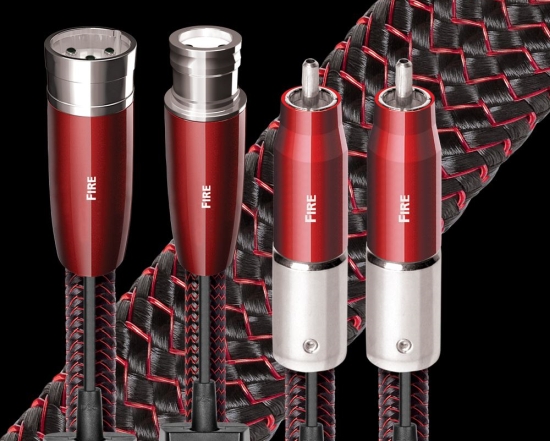
Single-Ended Cinch or Balanced XLR
On this subject, the opinions will probably forever diverge but I will add that I hear consistent differences between these two versions of cables. And I hear them no matter if the interfaces are transformer-coupled or DC-coupled, and whether the equipment is truly balanced or Single-Ended internally. In the case of CH Precision, the equipment is truly balanced and the interfaces are DC coupled. For the longest time, I preferred XLR cables for their wider soundstaging that subjectively felt to be more impressive, as opposed to single-ended cables’ narrower, but sometimes more accurate soundstaging. But since a couple of years, and increasingly so, I prefer precision and accuracy over a subjective grandness. Moreover, since using dynamic speakers rather than dipoles, it’s clear that single-ended connections provide deeper and more 3D soundstaging than balanced connections. Yes, it’s usually less ultrawide but one could ask which of the two renditions is more “real”. I won’t pretend to know the answer to that but I will say that I gladly trade some wideness for more layered and more convincing 3D imaging. And what’s lost in terms of cinemascope effect is not even that much. I’d even be tempted to conclude that balanced connections add some default wideness and that single-ended connections can sound just as wide if this is registered in the recording.
This review was done using the Cinch-terminated version of the Fire cable, versus the XLR-terminated balanced CH Precision cable. Isn’t that apples and oranges? Yes, well, actually no. I have done countless cable comparisons with the CH components and apart from the aforementioned structural difference in terms of imaging, there is by no means a preference for either connection method. Given my current preference for the highest purity and precision, as well as enabling the widest application, I’d opt for the single-ended cinch version. But it is really a moot matter because while some manufacturers charge differently depending on the configuration, AudioQuest interlinks cost the same whichever way you terminate them.
Other combinations
I also tried the Fire in between the Aqua Formula xHD DAC and the Audio-GD Master 1 preamp only for it to repeat what I had already heard with the CH DAC. Although it might seem crazy to combine such a fine DAC with such an affordable preamp and it might make even less sense to use such an upscale cable with these components, all the same, here too, the Fire formed the best cable match that I have heard so far.
The same was true in the secondary system when used between the Ayon CD-10 II CD player and Spirit III amplifier where I have used the Water for years and recently switched to a simple old Siltech Paris cable. Well, as could have been expected, the Fire resolutely showed the Siltech its place. This shows two things. First, it is evidence of the Fire’s superb performance, and second, it shows just how neutral and unbiased it is.
Conclusion
Maybe it’s because AudioQuest is most well-known for its affordable lines of cables that the brand gets overlooked for its high-end lines but if this review proved one thing, it’s that this is absolutely undeserved! Not only can AudioQuest make great cables at low cost, but they also make cables that challenge the best that I have heard so far, irrespective of the cost.
Yes, you do pay for the privilege, quite steeply so. But given the stellar increase in performance that the cable enables, I still think it’s worth it. Beware, though, as hearing is believing. I am the third person in a row who purchased the cable after hearing it for the first time. You have been warned!
The Fire is the all-around best interlink that I have used so far.

External Links
AudioQuest Global: www.audioquest.com/
AudioQuest Nederland: www.audioquest.nl/
Sales Managers Benelux
Jules Withagen and Frederic Veerman
Roosendaal, The Netherlands
Telephone: +31 165 54 1404
Email: info@audioquest.nl
J. Withagen: jwithagen@audioquest.nl
F. Veerman: fveerman@audioquest.nl
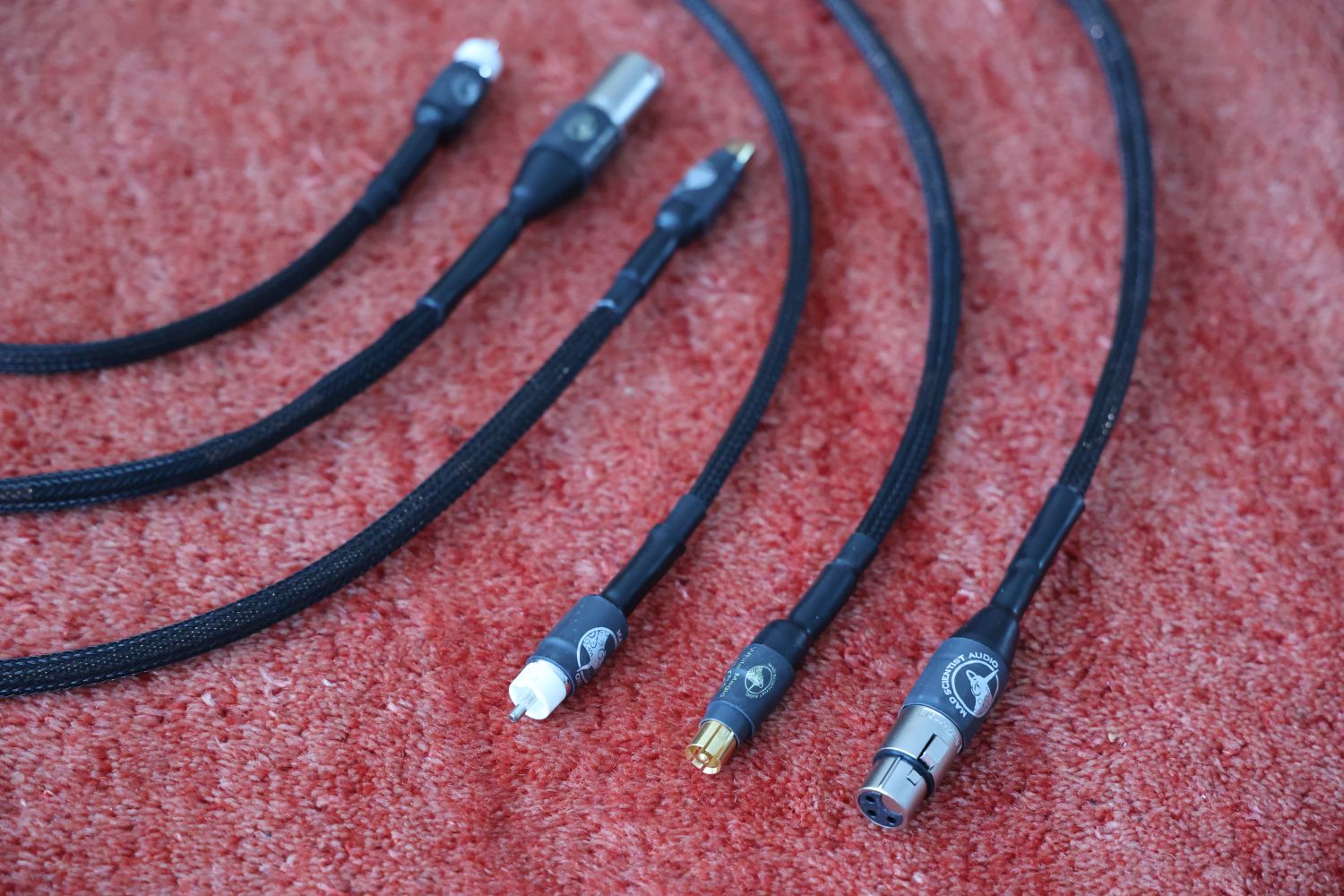
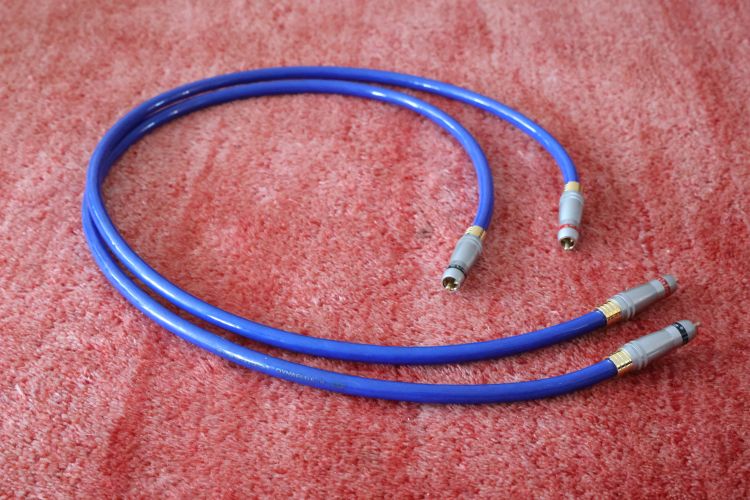

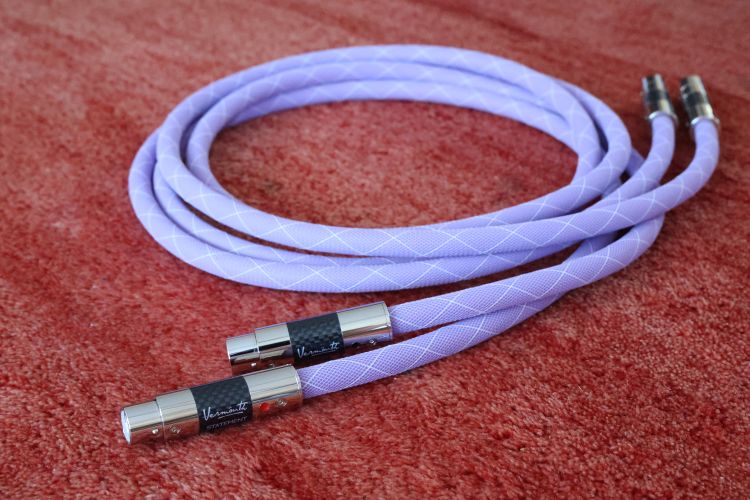
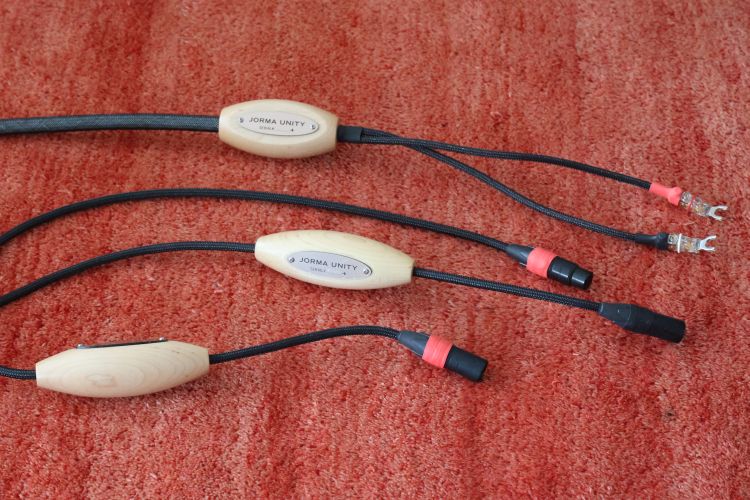
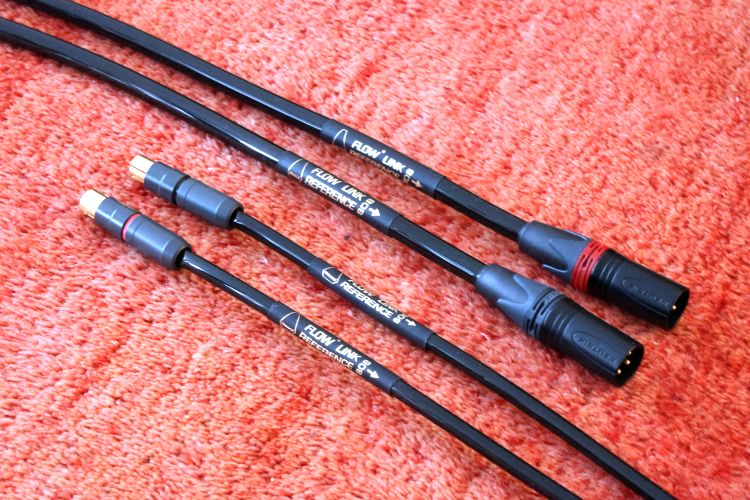
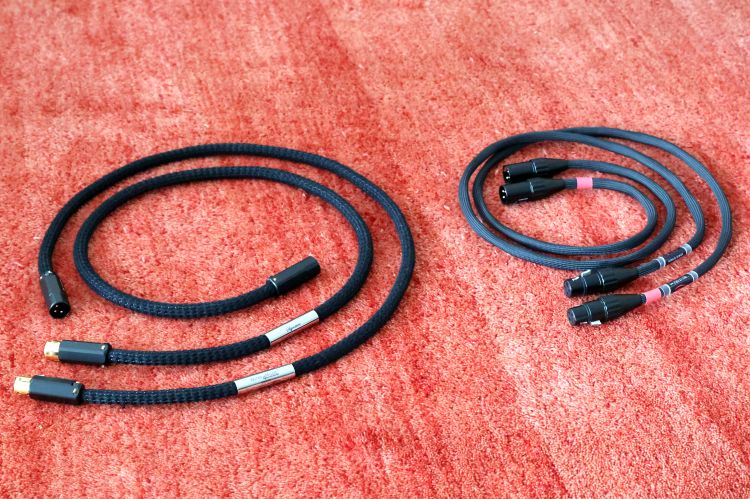
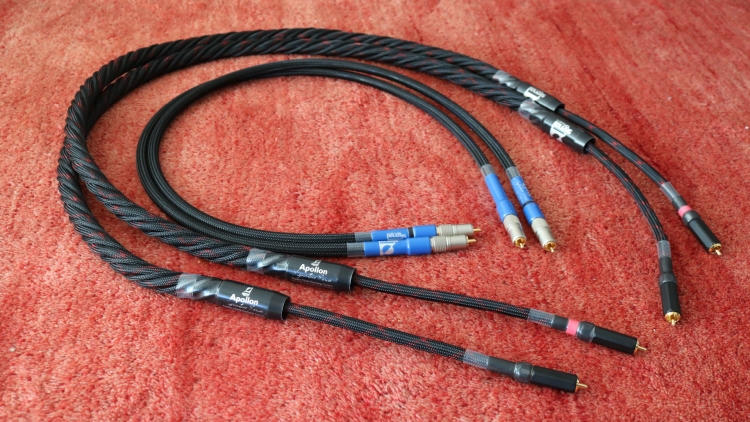
Hi Christiaan,
Do you still have the Cardas Clear IC around? Tha will be a very interesting comparison! I am using these Cardas in my system with excellent results compared with my old JPS Ultraconductor 2 cables. However, I been asking my self, how much better the Fire are vs the Clear ICs. That was after tried a cheap Audioquest Mackenzie IC vs a Clear (all balance). Yes, the Clear sounded better, more real tone (can be easily heard on piano and guitar), all the other aspects of a good cables were there, very close. So that was a $250 AQ IC, I am wondering, how these Fire will sound!
Regards
Carlos
Hi Carlos, I don’t use the Clear anymore but a friend still has two pairs and we did make the comparison at his place. They are both excellent cables but they are very different. Not so much in terms of linearity or transparency, but the Clear is sweeter and gentler and quite relaxed and the Fire is more impactful and direct and very fast.
It really is a matter of taste. To my ears, the Cardas is too mellow. It’s still got some of that sweetness that the Golden Cross started. For me, the Fire is more realistic sounding. I’ve not heard the Mackenzie, but if it has a similar sound as the Water, then I think you’ll love the Fire. Just be aware that the Mackenzie, as the Water, might sound a little closed-in or rounded at the top and might be relatively forgiving. The Fire has no edge or hardness, but it offers a wide open window on the music, it does not conceal anything. So, your system needs to be ready!
Hi Christiaan,,
I really appreciate ithis information regarding Cardas and AQ comparison, very interesting. I believe that I will try them on my system. I been using AQ Hurricane PCs and are amazing cables, maybe is good time to try AQ ICs as well.
Thanks
Carlos
Glad I could help. Do let me know how you get on!
Hi Christiaan,
I’m using a AQ Fire RCA-RCA inbetween the phonopreamp Cyrus Phono Signature and the Naim nac 202 preamp. From the Thorens td 1601 to the phonopreamp I have a Vd Hul Thames.
Can an Origin Live Silver Hybrid S2 interconnect work better than the AQ Fire because of the low impedance?
John
I’ve considered the Cyrus Signature Phono stage some time ago and still think it is an unusually versatile unit as well as a beautiful piece of work. But I’ve not heard it so my comments must be a little generic.
Between a phono preamp and a preamp, the signals are normally line-level with a high-impedance input. The Naim has a 47kΩ input impedance which should not pose problems for any cables. The Cyrus’s output impedance is not mentioned in the tech specs but I would assume it’s suitably low. As such, I don’t see what you are hinting at when you mention “low impedance”.
That said, I don’t think that the Origin Live Silver Hybrid cable has a technical advantage over the Fire in this scenario but the two cables have very different sonic presentations which will be a matter of taste and system synergy. Mainly, when moving from Fire to Silver Hybrid, you will gain fluidity, air, and refinement but at that cost of bass solidity and drive.
Or maybe you are actually asking about using the Silver Hybrid instead of the van den Hul Thames? I’ve not heard the latter but in that case, I suspect that the Silver Hybrid will be a better cable overall, but still, it will be a matter of taste.
Hi Christian
Reading your thoughts and opinions with ever increasing interest. I really appreciate your writing, thank you.
As a headphone listener only soundstage and imaging is not the same experience as with a speaker setup.
I decided anyway to try switching my interconnects from XLR to RCA based on your conclusions. And lo and behold the soundstage improved with increased depth (and a slightly less width).
That’s great feedback, Marcus! Interesting to hear that these findings also translate to head-fi!
I saw the picture of your setup if you elevate the speaker cables off the floor you’ll be amazed at how much better it sounds the vibration affects the speaker cable, also you should check out a cable on the market it’s using the new rectangular OCC single crystal wire, the company that makes it is called Neotech, they have two cables in the reference line, The Amazon which is their rectangular silver OCC wire and The Sahara which is their rectangular copper OCC silver wire not cheap but Superior to anything ofc on the market at any price and much better than the round OCC.
I’m no stranger to that and have used the original ceramic Cable Elevators for a while, 15 or so years ago. While that yielded clear audiophile advantages, it also made the sound a little too clean and removed some of the “organic” quality. In the end, it is all about balance, and for me, the cable elevators pulled the sound too much toward the clinical. These days I still do not use cable elevators but that has more of a practical reason because as much as I walk around, I know I will trip over the cables someday;-)
Neotech I’m actually also familiar with, not for the speaker cables (just yet) but for their Teflon-insulated power wire which can be used to make power cables (I use the thickest 2mm diameter version). While it is strong medicine and one shouldn’t use if for all components, it works sublimely well as the main power cable to a power strip. The difference with regular solid core installation wire is stunning. So, I concur, this is an interesting brand.
Hi Christiaan,
I trust you’re well! I am using Foilflex XLR between my Ayon Audio S-5 pre DAC & my PS Audio BHK250 power amp.
These Fire cables are available on the secondhand market for a fairly reasonable amount. I’m trying to figure out the extent of the upgrade between the Foilflex & these cables. I care most about resolution, texture and transparency. How would you characterise the extent of the positive difference available here?
Thanks so much for any guidance you can give me.
Best wishes,
Jason
The Fire will not provide more resolution or transparency than the FoilFlex but it does provide deeper tonal saturation, better texturing, more “meat on the bones”, and deeper soundstaging.
Hi Christiaan, thank you!
Does the length of cinch cables make any difference to sound? 0.5m is much better value than 1m in this case…
Best wishes,
Jason
Hi Jason, I’ve very casually and briefly compared a 2m cable with a 3m cable as part of many other tests and there were indeed differences but I forget how they differed precisely. I recall one was tighter and crisper but not sure now which one it was. Normally, a shorter cable provides less of the cable’s inherent sonic properties and a longer one possesses more of it. This is often the case with cables that have thick dielectric/insulater/sleeving materials. But this is only a general rule of thumb and sometimes it can be the other way around. In any case, you can be sure most of the time that length makes a difference. But before you ask, I don’t have a “best” or “ideal” length. Practically, 2 meter is ideal for me, but sonically, the “ideal” length (for my system and taste anyway) may differ per brand and model.
Amir from Audio Science Review measured AQ cables and noticed “antenna effect”, which he attributed to that wire hanging on each AQ cable. He showed distortions on his spectrum diagram from Audio Precision device.
Thank you for your reply Christiaan! I thought I had read something on your site about cable lengths.
I bought some secondhand Audioquest Thunderbird XLR in the end. They seemed much better value….
Thunderbird sure are good value but they have a different sonic presentation (slicker, more fluid, and texturaly and timbrally less convincing, arguably more synthetic/less realistic) and are not one on one replacements for the Fire.
I appreciate you writing this so clearly Christiaan. I’ve corrected things… I’ll let you know what I make of the Fire.
& now I know! It took a while to all play out but I am currently listening to my system with AQ Fire RCA cables in. A totally different level of silence, realism and SPACE. Wow! The stage just expanded in all directions, with detail, texture and timing even further enhanced.
I particularly love the way instruments and sounds in the mix arise and eventually decay.
Glad to hear you’re enjoying them:-) Happy listening!
Thanks for the test , sadly i dit not see you note about xlr vs
Rca . I have just Exchange Earth whit fire . And i vent from rca to xlr because i hope that xlr whold be an advantage but nope , I miss the precision in the soundstage . The fire is still a fantastic cable . I got it on second hand marked and it have not been used in a year , so I think a couple of days will get it into shape again , but for now I experience the same difference as you mentioned between xlr and rca .
Hi Christian, My experience with the Fire cables is that they become smoother, warmer, and rounder as time passes. As such, alas, I would not expect the XLR to start sounding as focused as the RCA over time.